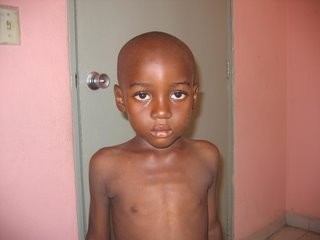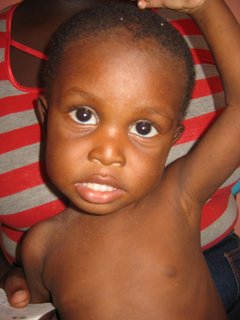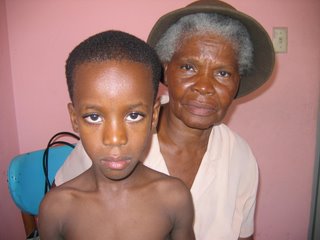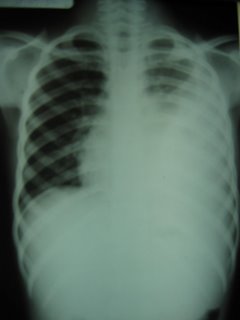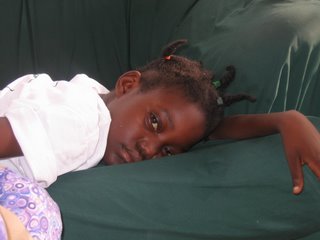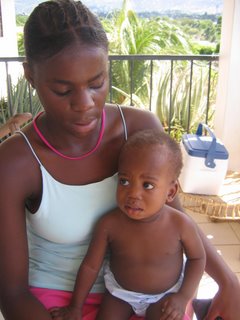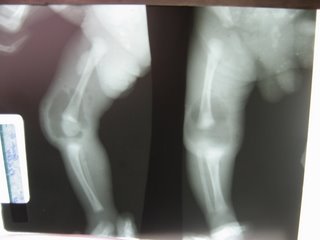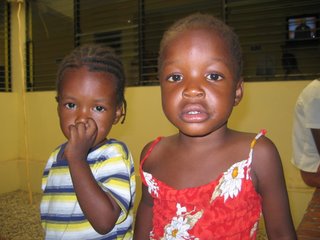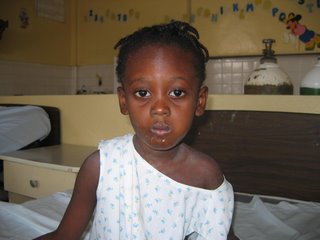
The baby boy pictured above is 16 days old. His name is Kenley. His aunt carried him into clinic two mornings ago and his seventeen year old mom followed behind.
Kenley was born at home, like most Haitian babies. His mother had a fever during pregnancy, but the delivery went well. He was not premature. The aunt, who carried a cell phone, and mother stated that a few days after birth he developed a fever. Amazingly, he has never been offered breast milk or powdered milk. The only liquid Kenley has ever had in his 16 days on earth was boiled water.
His exam revealed an emaciated, shriveled little baby with the wrinkled face of an old man in severe distress. His temperature was 102.5 F. He seemed to be pretty stiff and did not want to be moved much. His fontanelles were sunk and his skin tented when pinched indicating dehydration. He was not jaundiced and his umbillical area looked free from infection.
Kenley was obviously very sick. Infants with fevers are considered medical emergencies. Two hospitals rejected Kenley but we were able to admit him to a "doc-in-the-box" for an IV and antibiotics. His chances for survival are minimal but maybe better than before. I don't now.
Where was Kenley failed? Many places. He was born at home with the help of a midwife. His young, uneducated mother had an infection of some type during her pregnancy which put Kenley at risk for infection. His mother had no prenatal care. Kenley had not been given nutrition of any sort according to his aunt and mother. He had fever for many days and his visit to me was his first encounter with a doctor.
Two hospitals refused to admit him the other morning. His hospitalization now is not in a neonatal intensive care unit. He is being cared for by nonspecialists in a primitive setting. We have no idea what his blood work is or where is infection is originating. He may not even be receving the proper antibiotics.
Haiti's infant mortality rate is very high---one of the highest in the world. Kenley's horrible case can attest to this.
Haiti has been given the bad end of the deal by the international community for hundreds of years. Hundreds of millions of dollars have flowed into Haiti over decades. The money hasn't reached or helped most Haitians.
Haiti needs benevolent leaders. The corruption in Haiti is fierce, almost as bad as the United States. Money needs to trickle down to the Kenley's that are in need. Haiti needs to point the finger at themselves too. It just doesn't need to be this bad here.
Haiti is embarrassing.

